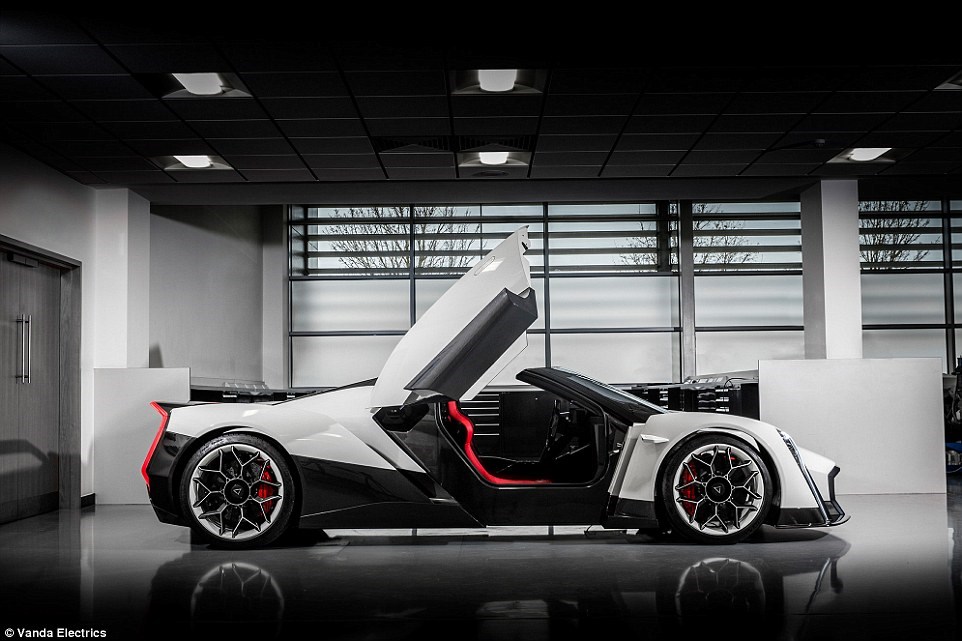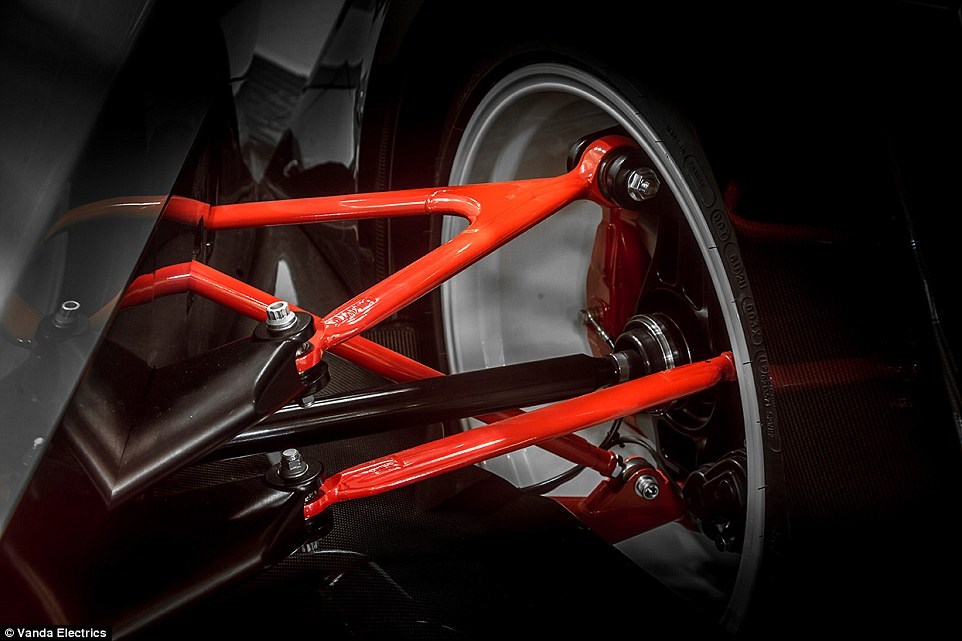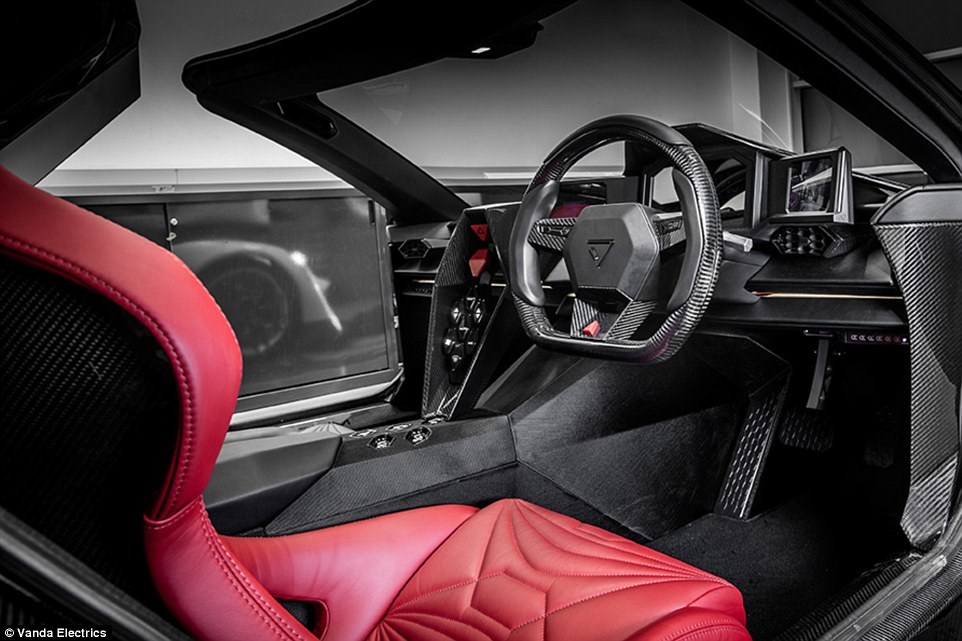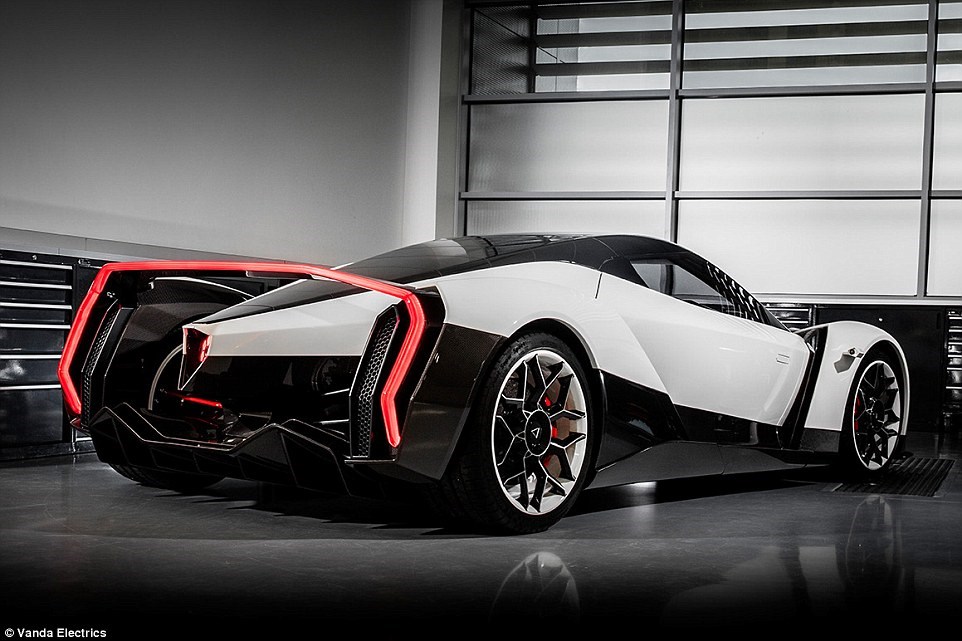When you think of hypercars you probably think of Italian manufacturers - Ferrari, Bugatti, Lamborghini, or Pagani - or iconic UK brands - McLaren or Aston Martin. Probably not Singapore, though.
But this extraordinary concept claims to be the first hypercar from the South East Asian country. Called the Dendrobium, the thinking behind it sounds as crazy as it looks and it has been co-developed at Williams F1's Advanced Engineering hub in Britain.
It's more than just a concept, too. Manufacturer, Vanda Electric, says it has 'every intention of putting it into production', if enough people want to buy one. Those buyers would get an exclusive, all-electric hypercar expected to hit 60mph in 2.7 seconds and top 200mph.
There are no suggestions of what this may cost, but a Ferrari LaFerrari hypercar costs about £1.1million, or $1.4million - anything close would be one steep fee for a car built by a brand most people would never have heard of.

The car was showcased for the first time in the flesh at the 2017 Geneva Motor Show today, after months of teaser pictures suggesting what the final product could look like. And it hasn't disappointed.
According to the brand, 'Dendrobium' was selected as the car resembles the flower of the same name when the rear-hinged doors and roof are open. 'Transformer' might have been a more accurate description.
The opening system is pretty unique, though - the automatic winged doors and roof panel move together in one synchronised motion to allow easy access into the driver's seat, which is identified from the passenger seat by being lathered in red leather rather than black.
It certainly toes the line of looking too extreme for the road, but Williams Advanced Engineering - which has masterminded projects like the Jaguar CX-75 and electric Aston Martin Rapide - has been tasked with making the car compliant on all tarmac surfaces, not just silky smooth race tracks.
That said, the F1-like double wishbone suspension - fully exposed at the back of the vehicle - suggests this will be a circuit-tuned, all-electric, performance car. The low-slung stance, driver-orientated cabin and exaggerated aero features support the theory.

What's generating the power is currently under wraps. Of course, being Vanda Electrics, it won't be a V12 petrol engine but a pure-electric system, and the combination of electric motor and batteries is said to have enough clout to propel the 1,750kg hypercar from 0 to 62mph in 2.7 seconds and exceed the 200mph barrier.
The Singaporean e-mobility specialists did confirm a production version is likely to have two inboard-mounted electric motors per axle, with a single-speed gearbox and differential at the front and a multi-speed gearbox and differential at the rear. If it ever makes it to that stage, of course.
The concept that's currently wowing onlookers in Switzerland is a working prototype with a rear-wheel drive layout, but the production version could well drive all four wheels.
Williams will be responsible for pushing the development forward, not just bringing it's Formula-E electric power knowledge to the table but also using expertise in aerodynamics, lightweight materials and vehicle integration to create a production-ready version.
The work they've done so far is certainly revolutionary by road-car standards.
This includes the tear-drop shaped cabin, which forms the cockpit at the bulbous end and tapers into a tail section that also includes the plug-in port to electrically replenish the batteries.

Below that is a charging light - this shows the status of the car's battery life and is a feature that's remained a key part of the design since the initial sketches, Vanda says.
Other highlights of the Dendrobium's exterior are the aerodynamic floor, rear double diffuser and front splitter. But the standout feature at the back is the wrap-around rear light bar that floats over the tail of the car.
To keep the Dendrobium as featherweight as possible, the concept features a composite monocoque chassis, carbon fibre body panels and lightweight 20-inch front and 21-inch rear alloy wheels.
Continuing the British collaboration, the interior has been trimmed using leather from Scotland's Bridge of Weir Leather Company, which sources hides from heritage breeds and has adopted the very latest technology. 'The result is the lowest carbon tannery and leather product in the world - the perfect material for a zero emission halo model', Vanda tells us.

If it generates enough interest, the firm says it will push on with plans and expect to have a factory-ready version available to buyers by 2020.
Larissa Tan, Vanda Electrics CEO said the Dendrobium is a 'culmination of a dream' that's been in existence since its design team created hypercar sketches in the mid-90s.
'As electric technology has advanced, we have been able to revisit this vision and now, as we launch our revolutionary global e-mobility strategy, the timing is finally right for us to take the wraps off a halo model,' he said.
'Dendrobium is our interpretation and expression of what pushes the boundaries in the development of an electric performance car.
'We are looking forward to seeing the world's reaction to Dendrobium. This electric hypercar may just be a concept for now, but we have every intention of putting it into production.'












